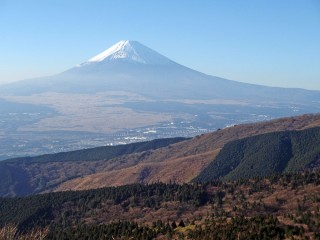Loading
Search
▼ What’s Happening in Japan? Volcanic Activity and the Chances of a Major Eruption
- Category:Other

DECODE SCIENCE
Much recent media speculation has focussed around the possibility of a major and catastrophic volcanic eruption within the Japanese archipelago — with some news sources such as the Daily Mail reporting that “Japan could be wiped off the face of the earth by a massive volcanic eruption some time in the next century killing almost all of its 127million inhabitants.”
Whether or not that turns out to be true (and probability of a volcano eruption is a very tricky thing to pull off with any degree of accuracy) Japan is highly volcanic – and often unexpectedly so, as recent events have shown.
Japan’s Volcanoes
Japan is known for its earthquakes, but volcanoes also have their place in the country’s culture and in the world’s perception of the region.
This is perhaps most notably through the iconic and photogenic Mt Fuji. Both earthquakes and volcanoes have a similar source, both being associated with the country’s complex tectonic setting.
Part of the so-called Pacific Ring of Fire, Japan lies across four of the Earth’s tectonic plates: the Eurasian, Pacific and Philippine Sea plates, and the Okhotsk microplate (a southward extension of the North American plate). The subduction zones between the plates (which occur at all four margins) are the source of many of the country’s earthquakes.
Subduction gives rise to volcanoes as well as earthquakes. As the crust descends, it melts at high temperatures and pressures. The molten rock, or magma, is more buoyant than the surrounding rock and rises, reaching the surface as lava — and forming volcanoes.
How Many Volcanoes in Japan?
The Smithsonian Institution/National Museum of Natural History’s Global Volcanism Program database lists a mind-boggling 135 volcanoes in the country’s territory: 47 on the island of Honshu; 20 on Hokkaido; and the remaining 68 on its many island chains. And these island chains continue to expand as submarine volcanoes make their appearance.
With so many volcanoes active at some point in the past 10,000 years or so, perhaps the only surprise is that so few are currently active. The Volcano Discovery website, which monitors current activity, lists just two presently erupting (Aso and Nishinoshima); three exhibiting minor activity; and six showing signs of unrest.
Mount Ontake Eruption, September 2014: Out of Nowhere
The most devastating recent activity from a Japanese volcano came in September 2014, when Ontake, a volcano on the heavily-populated island of Honshu, erupted with no warning and with fatal consequences for at least 47 hikers then on the slopes of the volcano.
The GVP notes that: “According to the Japan Meteorological Agency, an unexpected phreatic eruption at Ontakesan occurred at 1152 on 27 September after an 11-minute period of tremor and uplift detected just minutes beforehand. The eruption produced a pyroclastic flow that traveled more than 3 km down the S flank”. With no warning and so many deaths, this (relatively) minor eruption made worldwide headlines.
Ongoing Activity at Aso and Nishinoshima, December 2014
Currently, the only erupting volcanoes in Japan are in the island chains of Izusu-Bonin (where the ‘new’ island of Nishinoshima continues to grow) and the Ryuku islands, where Aso has been erupting since 25 November. Though neither of these is a direct threat to any significant population, the ash plume form Aso caused cancellation and diversion of several commercial flights.
The Future: What Lies Ahead For Japan?
So what about the dire warnings reported in the Daily Mail and its counterparts? As you might expect, the study on which the media based their headlines is rather more circumspect. Academics from Kobe University produced forecasts which suggest the probability of a major eruption in the next 100 years is less than 1% (to be precise, 0.73% for an eruption defined as M7, or roughly the size of that which occurred at Mount Pinatubo in 1981).
Forecasting eruptions is a notoriously tricky business, especially for a region with many volcanoes of different types. In addition, the magnitude of an eruption estimates the amount of matter erupted rather than its intensity – and although many of Japan’s volcanoes do lie on the main islands, many more lie on the isolated island chains in its territorial waters.
We can be reasonably certain that Japan’s ongoing volcanic activity will, at some stage, include a major eruption and that such an event should — and will — be planned for. But prediction of the ‘extinction’ of the country and its population looks to be a little hasty.
- December 9, 2014
- Comment (0)
- Trackback(0)

